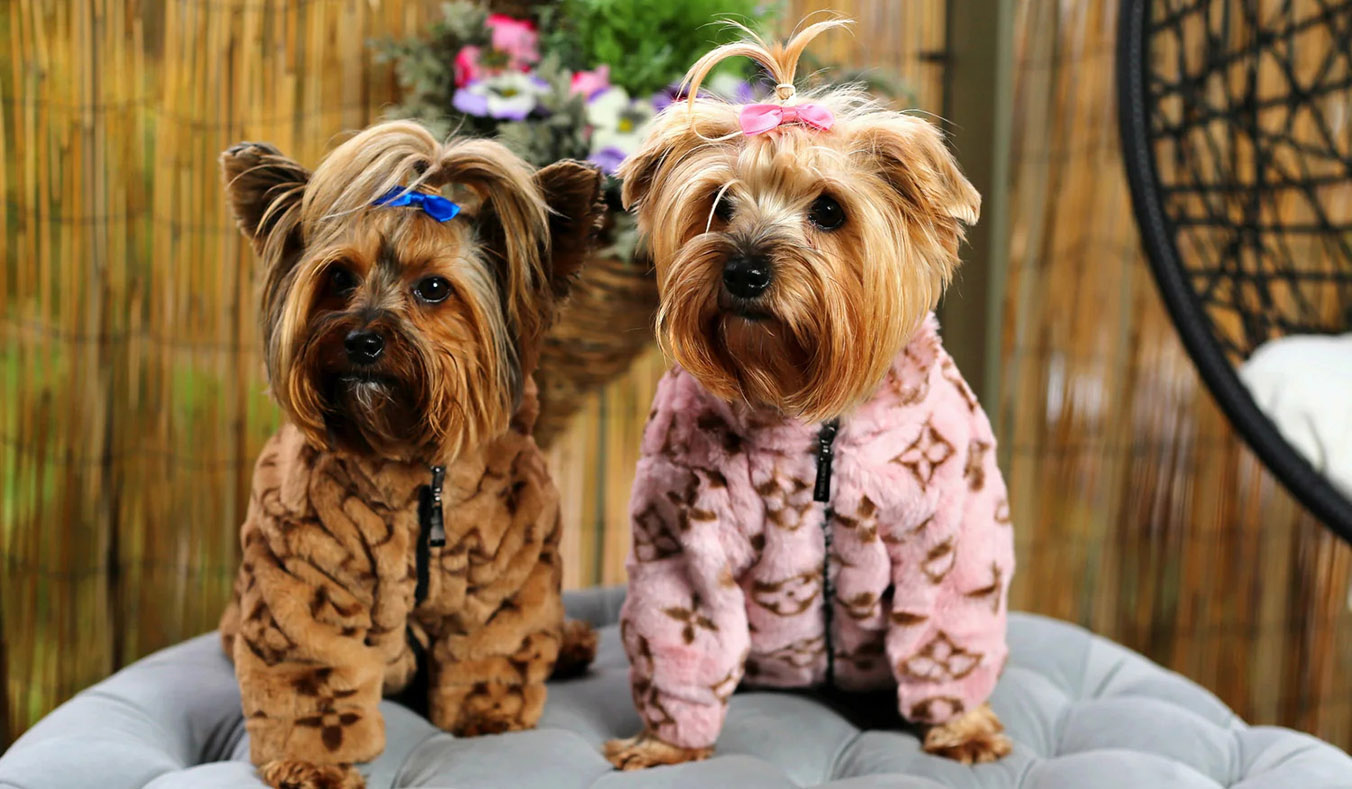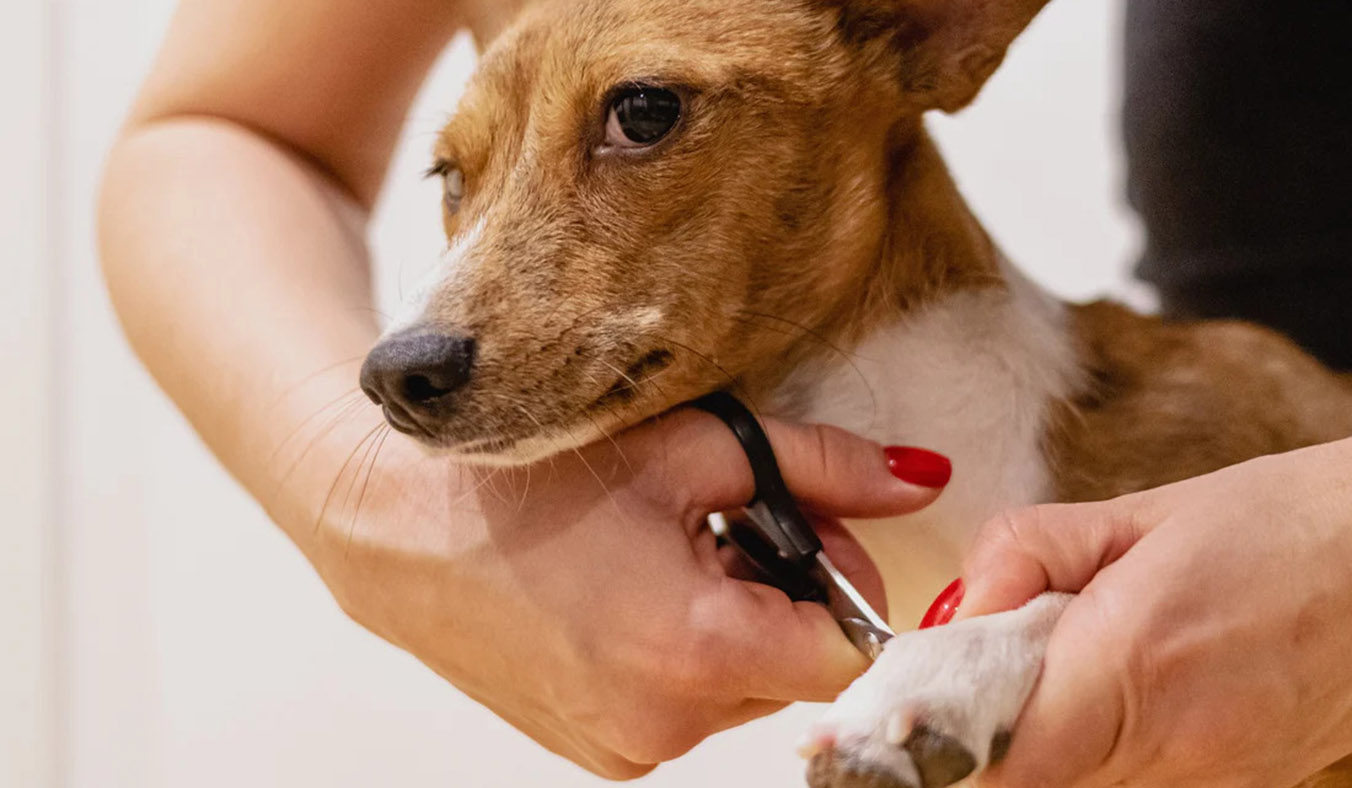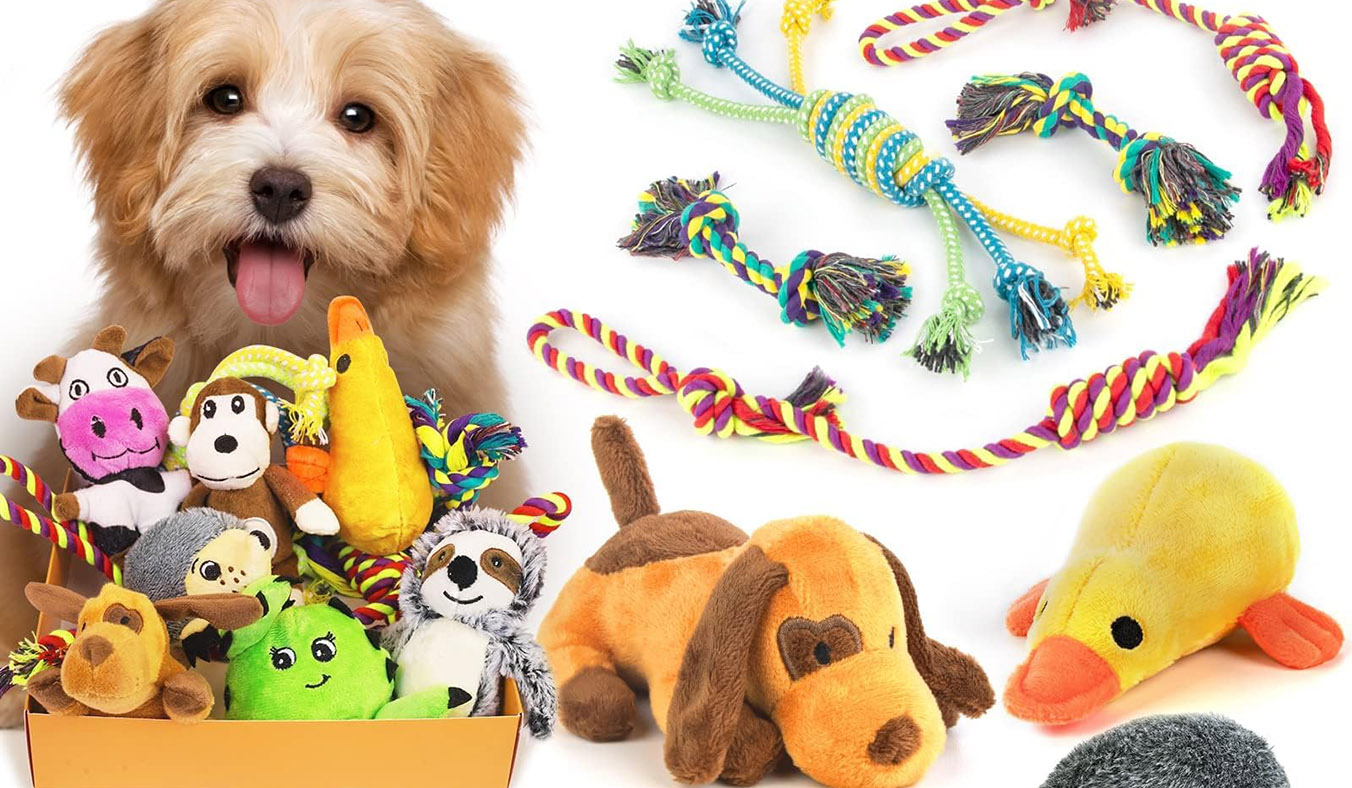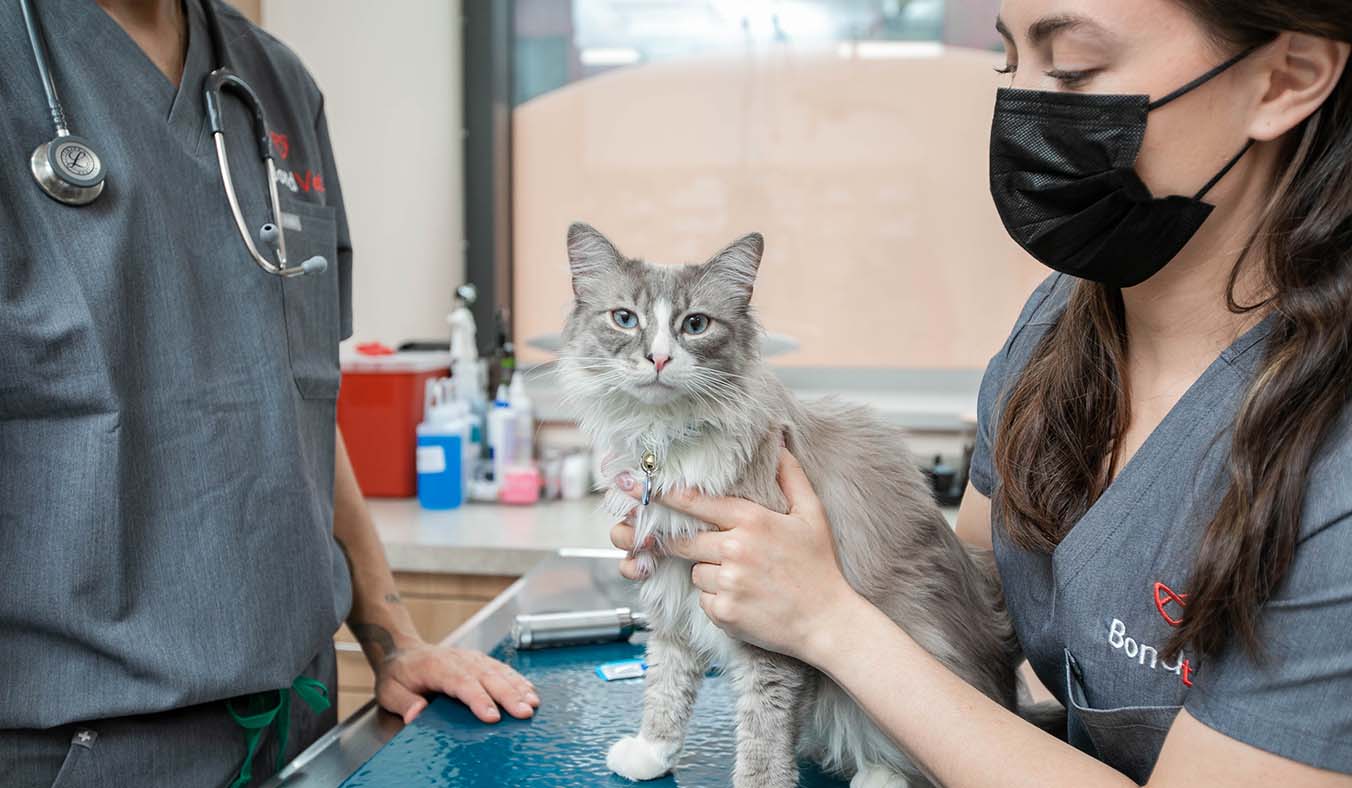Just like humans, some dog breeds are more sensitive to cold and adverse weather conditions, especially during winter. Small breeds such as Chihuahuas and Yorkshire Terriers are particularly vulnerable to cold temperatures and can benefit from appropriate clothing. Here’s a comprehensive guide to help you choose the right clothing for your small dog.
Why Dress Your Dog?
Dressing your dog in suitable clothing can provide significant benefits, beyond just looking adorable. Here’s why it’s important:
Protection from Temperature Fluctuations:
- Preventing Cold-Related Health Issues: Sudden temperature changes, such as taking your dog outside in cold weather after being warm indoors, can lead to health problems like frostbite, colds, or skin issues. Proper clothing helps mitigate these risks.
- Health Considerations for Indoor Dogs: Dogs that live primarily indoors may be more susceptible to cold weather-related health issues. Dressing them appropriately provides additional protection against the cold.
Comfort and Health:
- Avoiding Overheating: While keeping your dog warm is essential, overheating can also be a concern. Ensure that the clothing is well-ventilated and suitable for the weather conditions to avoid excessive sweating and discomfort.
Types of Clothing for Small Dogs
Dog Coats:
- When to Use: Ideal for extremely cold weather. Coats provide essential warmth but should not be overly insulated to the point of causing overheating.
- Material and Features: Look for coats made of insulating yet breathable materials. Options like fleece or down offer good warmth. Ensure the coat has adjustable straps for a snug fit and covers the torso adequately without restricting movement.
- Examples: Quilted coats for heavy winter, thermal coats for extra warmth, and stylish winter jackets for daily walks.

Raincoats:
- Purpose and Use: Raincoats are crucial for wet conditions. They protect against rain and prevent the dog’s coat from getting soaked, which could lead to chills.
- Material and Features: Choose raincoats made from waterproof or water-resistant materials. Look for features such as adjustable hoods, reflective strips for visibility, and secure fastenings.
- Examples: Lightweight rain jackets for drizzly days, full-body raincoats for heavy rain, and parkas with hoods for added protection.
Insulated Jackets:
- When Necessary: Best for snow or very cold conditions where additional warmth is needed. They help keep the dog’s belly dry from snow or wet grass.
- Material and Features: Insulated jackets often include features like fleece lining or down fill. Ensure the jacket is easy to put on and remove, and has secure closures.
- Examples: Down-filled jackets for extreme cold, padded vests for additional warmth, and thermal-lined jackets for snowy conditions.
Sweaters:
- When to Use: Perfect for transitional seasons such as spring and fall when temperatures are cool but not freezing. Sweaters provide light warmth and are suitable for short walks or playtime outside.
- Material and Features: Opt for soft, breathable materials like wool or cotton. Ensure the sweater fits snugly but comfortably, allowing free movement.
- Examples: Knitted sweaters for cooler days, fleece-lined sweaters for extra warmth, and stylish patterns for a fashionable look.
Training Your Dog to Wear Clothes
Start Early:
- Positive Reinforcement: Begin introducing clothing to your dog at a young age using positive reinforcement. Reward with treats and praise when they wear the clothes willingly.
- Avoid Negative Reinforcement: Do not scold or punish your dog for resistance. Negative reactions can create aversions to wearing clothes.
Gradual Introduction:
- Short Sessions: Start with short periods of wearing the clothes and gradually increase the duration as your dog becomes more comfortable.
- Comfort Check: Ensure the clothing is comfortable and not too tight or restrictive. Monitor for signs of discomfort or stress.
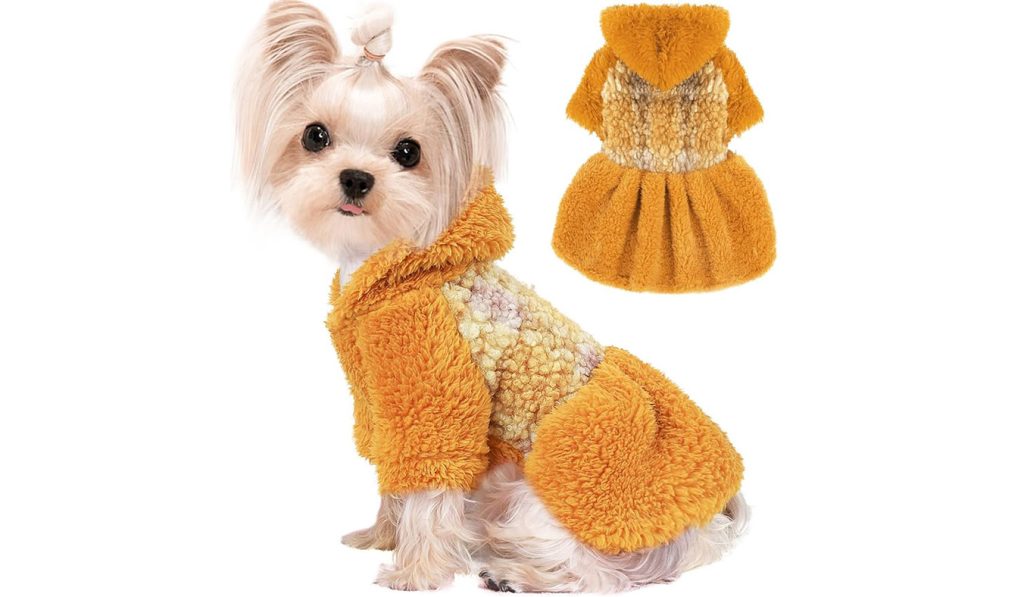
Health and Safety Considerations:
- Monitor Reactions: Pay attention to how your dog reacts to different types of clothing. Adjust the fit or style if necessary to ensure comfort.
- Seasonal Adjustments: Choose clothing that is suitable for the current weather conditions. Avoid heavy clothing in warm weather to prevent overheating.
Proper Care and Maintenance:
- Cleaning: Regularly wash the clothing according to the manufacturer’s instructions to keep it clean and free of allergens or irritants.
- Fit Check: Periodically check the fit of the clothing as your dog grows or if their body condition changes to ensure continued comfort and effectiveness.
Choosing the right clothing for your small dog is crucial for their comfort and health, especially in varying weather conditions. Whether it’s a coat, rain jacket, or sweater, ensure that the clothing is well-fitted, appropriate for the weather, and comfortable for your dog. Properly dressing your dog will help them stay warm, dry, and healthy during their outdoor adventures, contributing to their overall well-being.
